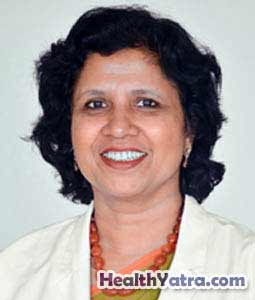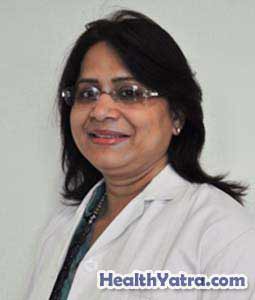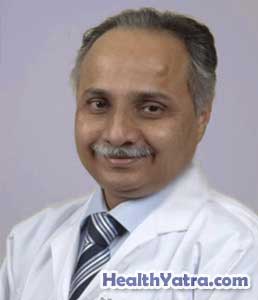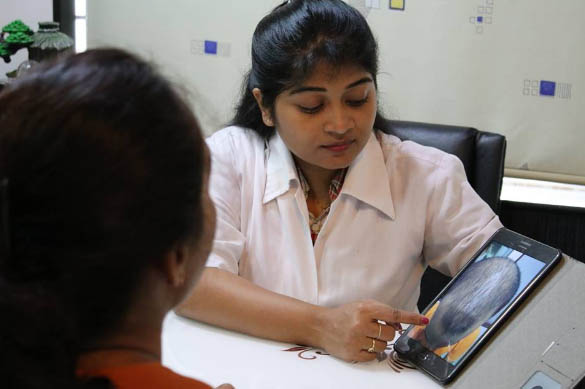
Max Super Speciality Hospital, Saket Delhi Doctors List
Located in the heart of south Delhi, Max Super Speciality Hospital, Saket (a unit of Devki Devi Foundation), is one of the premier names in health care domain in the world. Designed by internationally renowned architect Mr. Richard Wood and constructed in accordance with globally-accepted standards for hospitals, quality is our top priority. A 490-bedded healthcare facility, we are approximately 15km from New Delhi railway station and 12km from the domestic airport.
OVERVIEW
Designed by internationally renowned architect Mr. Richard Wood and constructed in accordance with globally-accepted standards for hospitals, quality is our top priority. Located in the heart of South Delhi, Max Super Speciality Hospital, Saket, is one of the premier names in health care domain in the world.
DIAGNOSTICS SERVICES
Pathology, Radiology, Cardiology, Nuclear Medicine
HEALTH CHECK UPS
Executive, Speciality (Cardiac, Cancer), Corporate, Pre-Employment Check & Pre-Insurance Check
A SPECIALISED DIALYSIS UNIT
- Conforms with international standards
- Haemodialysis for patients with end-stage kidney disease/requiring renal replacement therapy
SPECIALITY CLINICS
- Women’s Heart Clinic
- Multiple Sclerosis (M.S.) Clinic
- Headache Clinic
- Geriatric Neurology Clinic
- Movement Disorder Clinic
- Pacemaker Clinic
- Arrhythmia & Electrophysiology Clinic
Institutes and Specialities
With over 2600 beds and 13 top hospitals in Delhi-NCR, Punjab and Uttarakhand, 2300 world-class doctors, Max Healthcare is one of the leading chain of hospitals in India. With over 500 ICU beds, the most advanced technology and state-of-the-art infrastructure, Max Healthcare is one of the best hospitals in India.
- Cardiac Sciences
- IVF
- Kidney transplant
- Minimal Access / Laparoscopic Surgery
- Neurosciences
- Oncology / Cancer Care
- Orthopaedics
- Urology/ Andrology
Most Advanced Technologies
Cutting edge technology to facilitate the best and shortest road to recovery. Get a closer glimpse in the picture gallery below.
INTRAOPERATIVE & PORTABLE CT SCANNER WITH NAVIGATION
Intra-operative CT
A portable, intraoperative, multi-slice, full-body 32 Slice CT scanner allows neurosurgeons to perform accurate, precise and real-time image-guided surgical procedures.
Features
The scanner allows imaging to be performed in the operating room, thereby reducing the need to transport patients from the radiology department and enabling the surgeons to make critical decisions during the surgery.
The equipment allows intra-operative imaging of brain and spine to perform image-guided surgery, hence increasing the accuracy to perform neurological and spinal procedures.
The surgeons are able to assess the patient’s condition before they are taken off the operating table.
LIMB SALVAGE CANCER SURGERY
Limb Salvage Surgery is a procedure done to completely remove bone tumours as well as soft-tissue cancers while preserving the patients’ limb both in form as well as function. At specialized centres, limbs affected by bone and soft tissue tumours can be saved from amputation in more than 90% of patients. The surgeon removes not just the bone affected by cancer, but also a layer of its normal surrounding tissue. The bone removed during this procedure is replaced using bone (taken from patients’ own body) grafts, metal implants, prosthesis, or a same tumour bearing bone after being rendered tumour free after removal from the body. Muscles for soft tissues from other parts of the body may sometimes be required to close the wound. It is highly recommended that such treatment should be performed right from the beginning at a specialized centre routinely doing these procedures, as even a wrongly performed biopsy can make limb salvage difficult leading to amputation.
MOLECULAR ONCOLOGY
Molecular Oncology is the study of cancer at the molecular level especially about the genetic alterations and their implications. This field combines the diverse techniques ranging from genomics, computational biology, tumour imaging, in-vitro and vivo functional models to know about the biological and clinical phenotypes. Cancer genetics has paved its way in comprehensive cancer care and plays an important role in the discovery of novel cellular targets for identifying cancer at an early stage and provide a better classification of cancers for prognostication and treatment selection. The most extensive clinical applications of Molecular Oncology and Cancer Genetics are in the field of Breast, Lung, Colon, Thyroid, Ovary, Melanoma cancer.
STEREOTACTIC BODY RADIO THERAPY (SBRT)
Stereotactic body radiation therapy (SBRT) is a non-surgical radiation therapy that delivers a high dose of radiation to destroy the tumour while reducing the possibility of damaging the healthy tissues. It is a procedure as similar to treating Central Nervous System (CNS), except that it treats the tumours outside CNS. Depending on the size and location of the tumour, the patient is usually given a treatment in a single dose or more than 5 doses. It is usually meant for treating small tumours (3-7cms) of pelvic, kidney, spine liver as well as prostate cancer, pancreatic cancer and sarcomas throughout the body. The equipment has the capability to adjust itself according to the tumour’s physical and biological parameters in order to deliver the right dosage, which is precisely targeted to kill the cancerous cells.
BI-PLANE LAB
BiPlane technology aids in the Diagnosis as well as treatment of disorders related to brain spinal cord, neck and face. An interventional neurologist can safely treat disorders like aneurysms, arterio-venous malformations (AVM), stroke; nose bleeds etc. using minimally invasive techniques and thus eliminate the need for open surgery. The biplane system produces high-resolution 3D images of the blood vessels to the brain. This system uses 2 sets of imaging sources & rotating cameras, each moving freely and independently, capturing the image at the rate of 30 frames/ second and from 2 regions of the patient’s head – front to back & side to side, which makes the positioning and re-positioning of the patient less time-consuming.
DA VINCI XI ROBOTICS
Da Vinci XI Robotics system is the next frontier for minimally invasive surgery. The surgeons operate through a few incisions by utilising a high-resolution 3D vision system, which allows the surgeons to view anatomical structures in natural colours. During an operative procedure, the surgeon sits at a control console and observes the operative field through a video monitor and manually controls the robotic arms which replicate hand movement of the surgeon. It features small wristed instruments that bend and rotates greater than the human hand providing a superior precision and control to the surgeon. Today, surgeons are using Da Vinci Surgical System on patients who are diagnosed with several complex conditions like urological procedures, cancers of cervix, prostate, lung, uterus, colon/rectum as well as heart disease and fibroid tumours.
It provides a natural hand-eye positioning coordination plus the built-in microphone facilitates efficient communication in operation theatre. The precision is ideal for use in complex surgeries because it would allow surgeons to avoid nerves and organs. These small incisions allow the
HIPEC
Hyperthermic intraperitoneal chemotherapy (HIPEC) treats advanced stage abdominal cancers, including appendiceal (appendix) cancer, colorectal cancer, primary peritoneal cancer, peritoneal mesothelioma, ovarian and stomach cancer. It is a highly concentrated, heated chemotherapy treatment that is delivered directly to the abdomen during surgery. Unlike systemic chemotherapy delivery, which circulates throughout the body, HIPEC delivers chemotherapy directly to cancer cells in the abdomen. This allows for higher doses of chemotherapy treatment. Heating the solution may also improve the absorption of chemotherapy drugs by tumors and destroy microscopic cancer cells that remain in the abdomen after surgery. The technology minimizes the rest of the body’s exposure to chemotherapy; and reduces some chemotherapy side effects. Before the patient receives HIPEC treatment, our experts perform cytoreductive surgery to remove visible tumors from the abdomen. It is a novel technique in which those abdominal malignancies are treated which were previously thought to be untreatable and were offered only palliative care.
DA VINCI XI ROBOTIC SYSTEM
Da Vinci XI Robotics system is the next frontier for minimally invasive surgery. The surgeons operate through a few incisions by utilizing a high resolution 3D vision system, which allows the surgeons to view anatomical structures in natural colors. During an operative procedure, the surgeon sits at a control console and observes the operative field through a video monitor and manually controls the robotic arms which replicate hand movement of surgeon. It features small wristed instruments that bend and rotates greater than the human hand providing a superior precision and control to the surgeon. Today, surgeons are using Da Vinci Surgical System on patients who are diagnosed with several complex conditions like urological procedures, cancers of cervix, prostate, lung, uterus, colon/rectum as well as heart disease and fibroid tumors.
It provides a natural hand-eye positioning coordination plus the built in microphone facilitates efficient communication in operation theatre. The precision is ideal for use in complex surgeries because it would allow surgeons to avoid nerves and organs. These small incisions allow the patient to resume his normal activities. In addition, there is less blood loss which helps the patients to regain strength and stamina over a period of time. This technology is a quantum jump in the way surgical procedures are carried out with superior patient outcomes.
BRACHYTHERAPY
The state of the art machine has proven to be a successful treatment for cancers of the prostate, cervix, endometrium, breast, skin, bronchus, esophagus, and head and neck, as well as soft tissue sarcomas and several other types of cancer.
MRI 3.0 TESLA
This hefty machine is well known for utilizing shorter scan times and maximizing patient comfort without compromising on quality. The superb reliability of high-field MRI allows our radiologists to differentiate between benign and potentially hazardous medical conditions with confidence. The features are superior than those of the MRI 1.5 Tesla.
CT SCAN
- GE Lightspeed 16-slice CT scanner
- Xtream FX suite workflow management
- Full Dicom connectivity
- Auto-segmentation
- 70cm gantry opening
- 65cm variable field of view
- High 2D and 3D resolution






























































